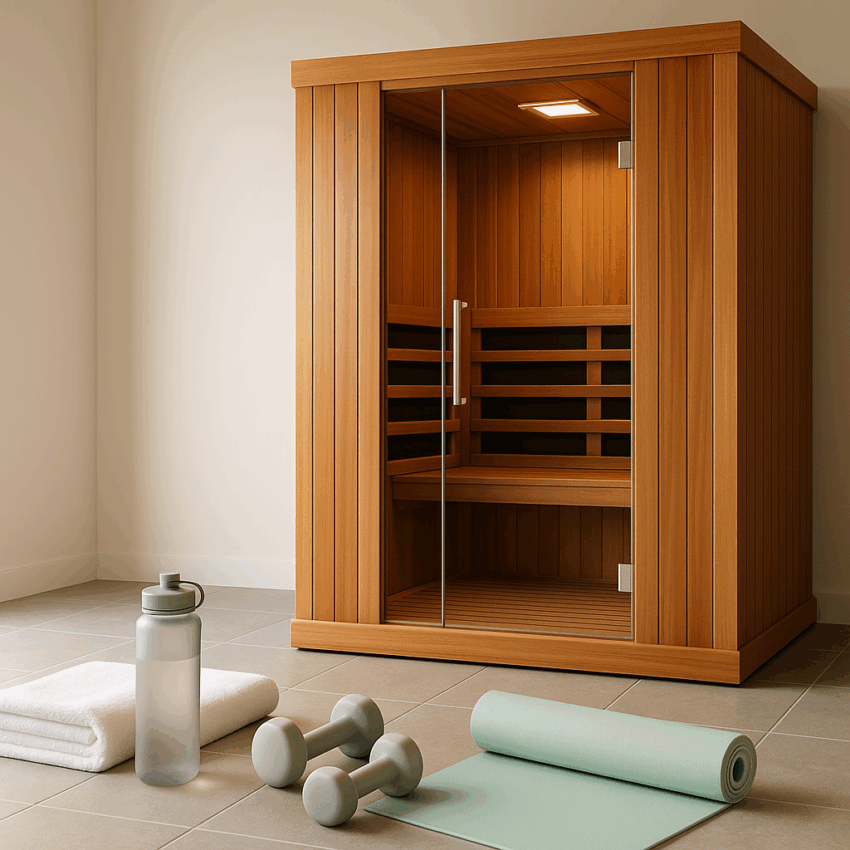Whether you’re a seasoned athlete or casual gym-goer, sauna use after training can significantly improve muscle repair, soreness reduction, and recovery speed.
Post-workout recovery is where real progress happens — muscles repair, inflammation subsides, and your body adapts to stress. While nutrition and sleep remain foundational, sauna use has emerged as a powerful tool in accelerating recovery. Backed by thermophysiology research, sauna bathing post-exercise can reduce soreness, improve circulation, and enhance metabolic waste removal.
Here’s why saunas are more than just relaxation — they’re a recovery tool.
1. Enhanced Circulation Aids Nutrient Delivery
Heat exposure causes vasodilation, which increases blood flow to the skin and muscles. This accelerates:
- Oxygen transport to fatigued tissues
- Nutrient delivery for muscle repair
- Waste removal, including lactic acid and metabolic byproducts
Improved circulation directly supports faster and more complete recovery.
2. Reduction in Muscle Soreness (DOMS)
Delayed onset muscle soreness (DOMS) peaks 24–72 hours after exercise. Regular sauna use:
- Reduces perceived soreness
- Promotes faster muscle relaxation
- Increases tissue elasticity
Infrared saunas in particular can penetrate deeper into muscle tissue, promoting warmth without overheating the surface, which can help reduce tightness and stiffness.
3. Heat Shock Proteins & Recovery Signaling
High heat triggers the release of heat shock proteins (HSPs), which:
- Assist in cellular repair
- Protect against stress-induced protein damage
- Improve long-term tissue resilience
These proteins support the rebuilding process post-training and may reduce exercise-induced inflammation.

4. Mental Recovery: Stress, Sleep & Hormonal Reset
Recovery isn’t only physical. Sauna use also benefits mental reset by:
- Lowering cortisol levels (stress hormone)
- Supporting melatonin production for improved sleep
- Enhancing parasympathetic nervous system activation
According to the (Semantic Scholar) sauna use post-exercise may reduce systemic fatigue and improve recovery through both physiological and psychological channels.
5. Timing Your Sauna Session
Best practices for post-workout sauna use:
- Wait 10–15 minutes after training to allow heart rate to normalize
- Start with 10–20 minute sessions, based on tolerance
- Hydrate before and after to replace lost fluids
- Combine with stretching or foam rolling for deeper muscle relaxation
Avoid sauna use immediately after high-intensity training if dehydrated or overheated.
Conclusion
Sauna bathing is more than just passive relaxation — it’s an active recovery strategy that supports muscle repair, reduces soreness, and resets the nervous system. Whether you use it after lifting, running, or HIIT, the physiological benefits of post-workout heat exposure are well documented and athlete-approved.
Incorporate sauna sessions into your weekly training cycle to recover faster, feel better, and reduce injury risk — because how you recover is just as important as how you train.
